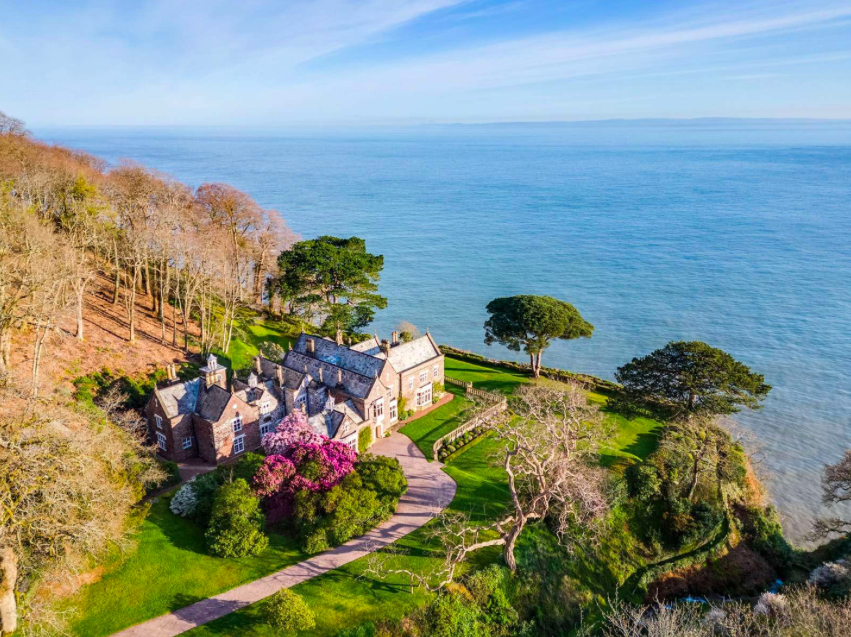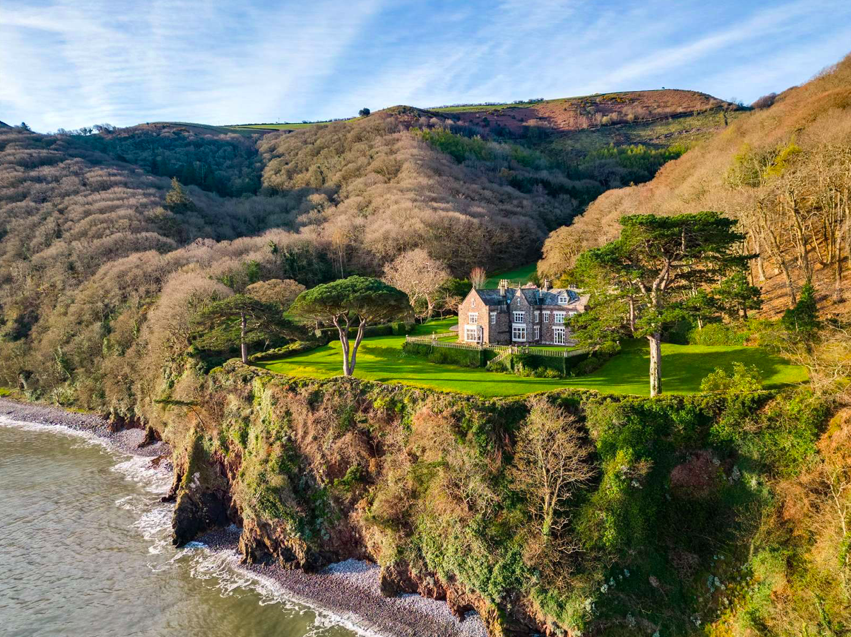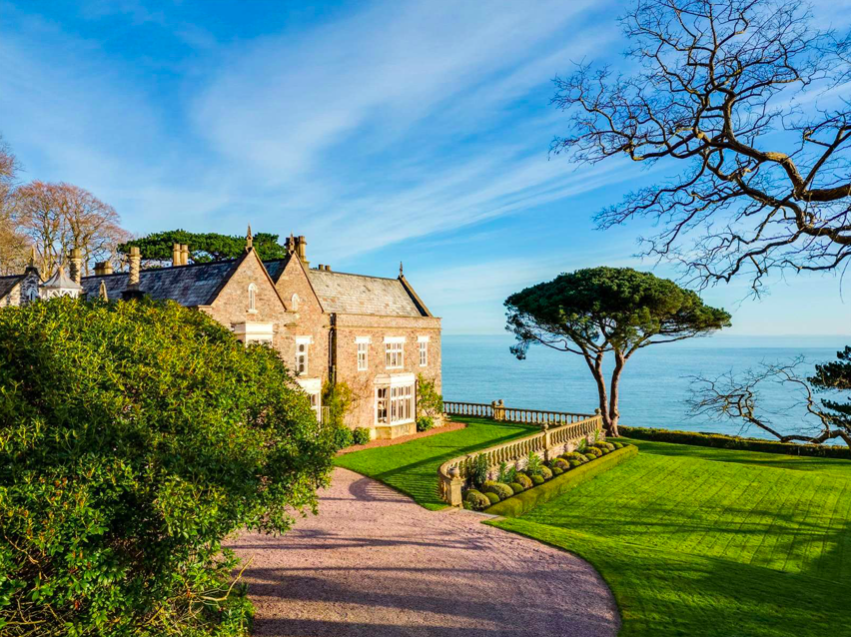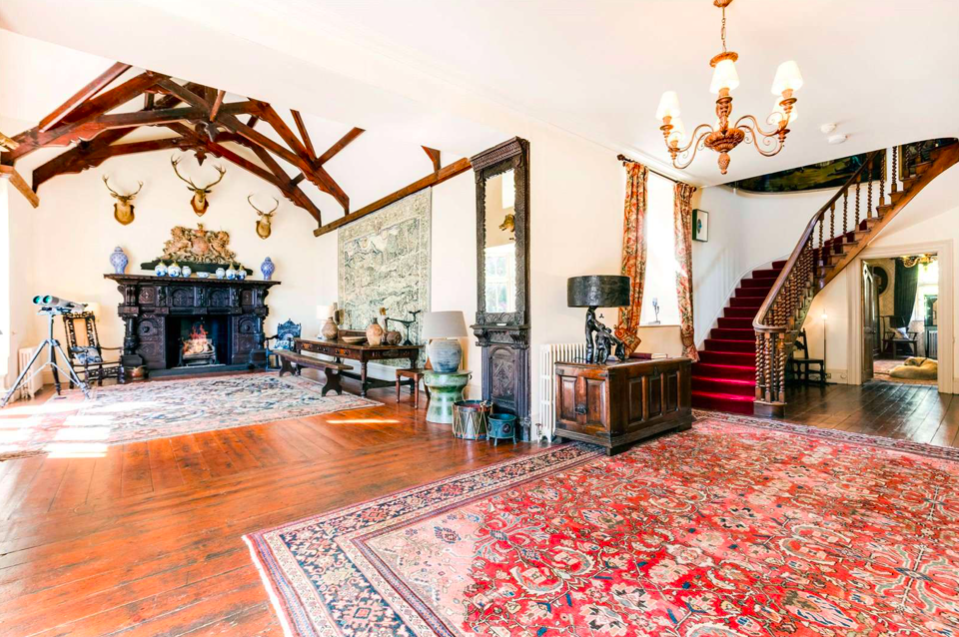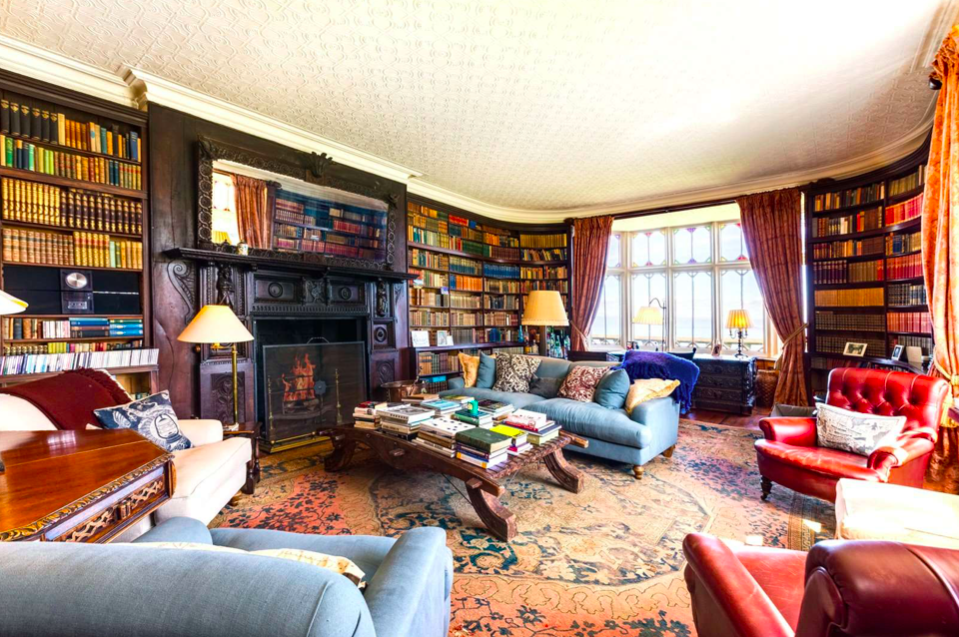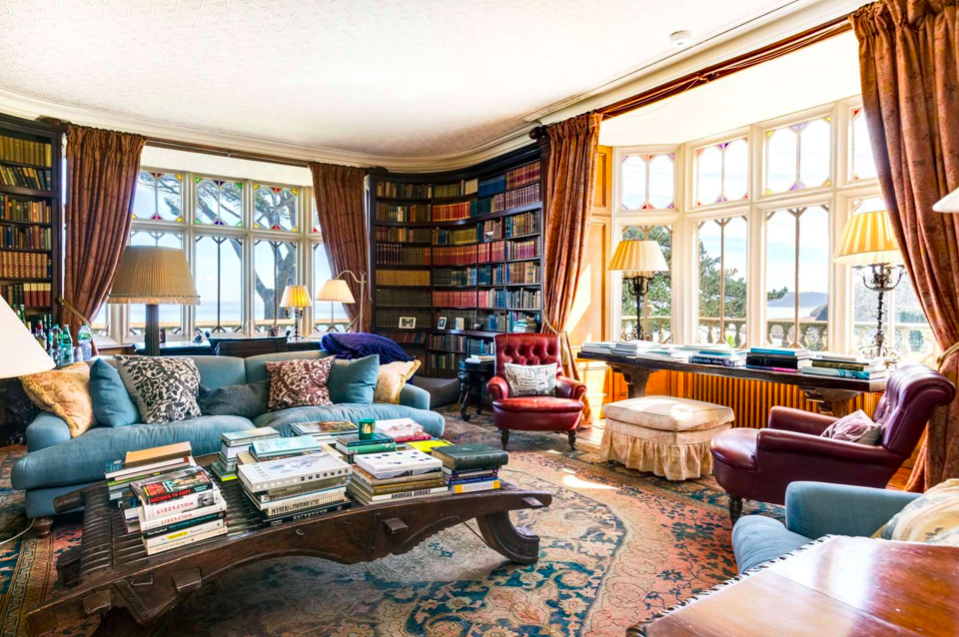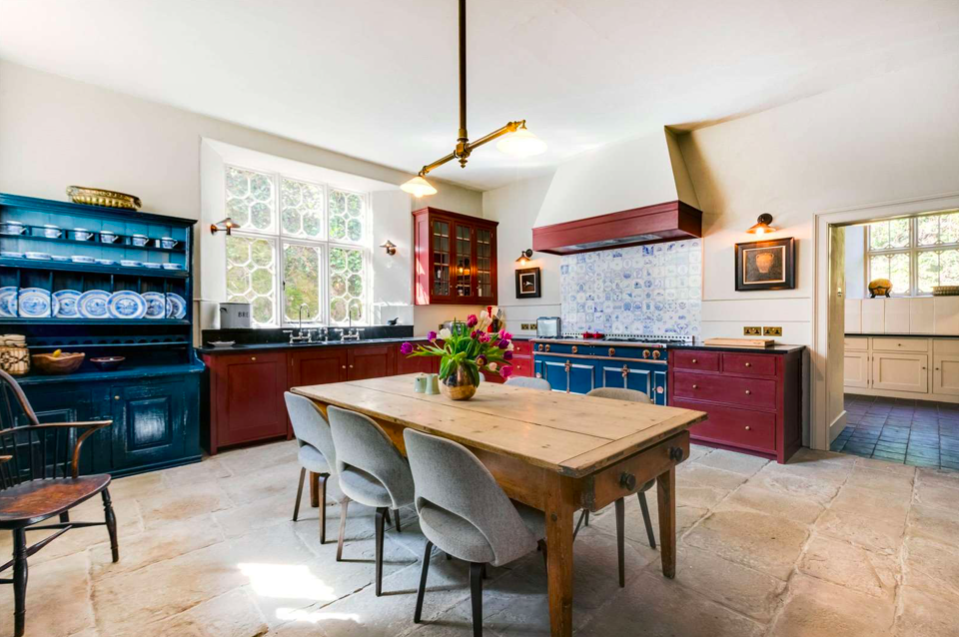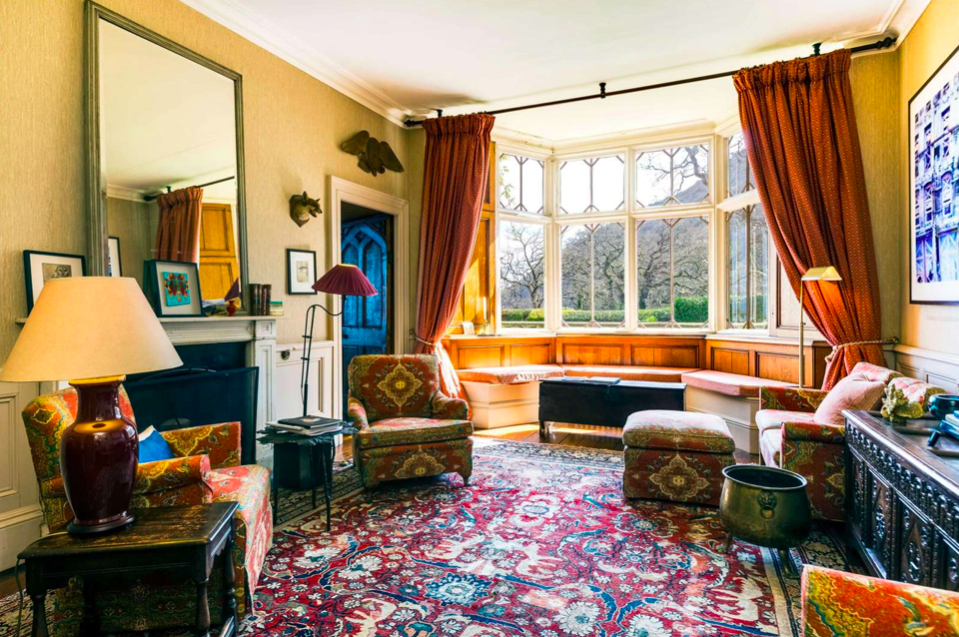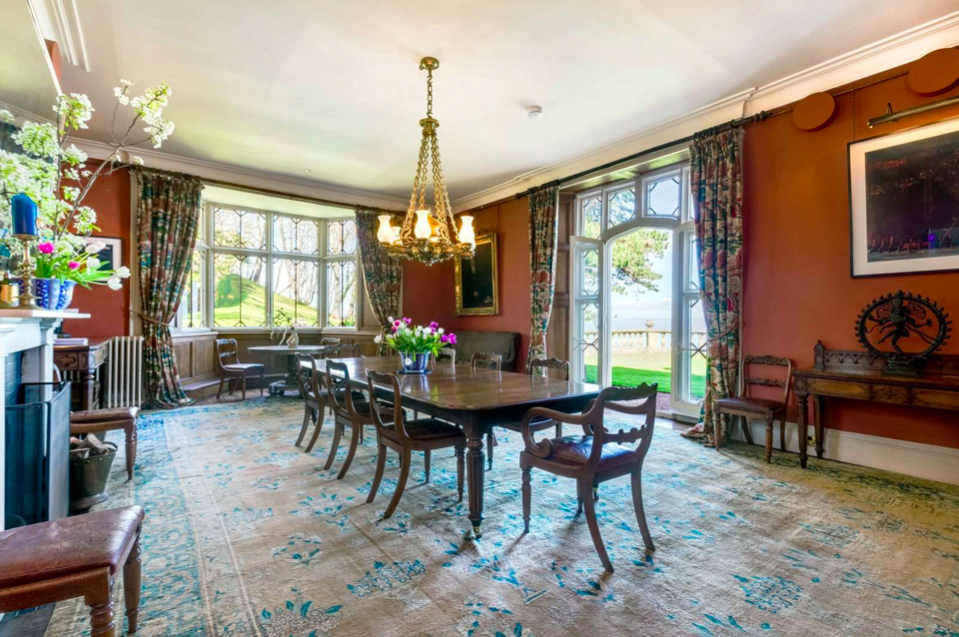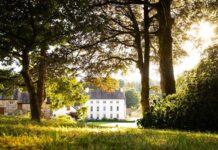Glenthorne House is classical Georgian in places and Gothic in others with a noticeable Tudoresque influence. The house has undergone extensive renovation work by the current owners, enhancing many of the buildings original features, whilst incorporating many modern conveniences, required of todays country houses. And its for sale. Read the whole story here and contact the seller for more details.
Externally the house has ridged roofs and gables and a profusion of carved stone finials and pergola like turrets. There are groups of Tudoresque ornamental chimneys brought from London and delivered via the sea. The windows are wide bays with stone moulds set in stone mullions. The heavy oak front door with its flat Tudor arch has a matching stone surround.
In keeping with the Georgian era, all the rooms benefit from high ceilings and excellent proportions, as well as having an array of period features representing earlier and more modern eras, including handsome chimneypieces, curved oak doors with Gothic arch panels and elegant ceiling mouldings. The main oak staircase ascends in a gentle curve to a circular landing lit from above by an oval sky lantern.
The design of the house takes full advantage of the spectacular views with all the principal rooms facing seaward. The house is ideally suited to both formal entertaining and as a family home with the flow of the ground floor leading from the reception hall providing access via the drawing room to the sunlit morning room, the library and the extensive dining room with magnificent bay window. An inner hall passes the gun room and pantry and leads to the kitchen, boot room and utility room.
On the first floor, the principal bedroom with adjoining bathroom is situated above the library enjoying the same outstanding views down the coastline. There are six further bedrooms and three bathrooms, as well as a study with a gallery and large studio. On the second floor there are four further bedrooms (of which three are currently being used as storage) and a bathroom. The house also benefits from a lower ground floor providing cellars and a boiler room.
Home Farm has been fully restored to a high standard and comprises a large kitchen, dining room, sitting room, office, a principal bedroom with adjoining bathroom, two further bedrooms and bathroom, two further reception rooms and a delightful courtyard, stabling and storage to the rear.
Adjoining the main building is a charming stone barn with vaulted ceiling currently used as a gym and would equally be suited as a formal drawing room or party barn.
History
Glenthorne sits in one of the most spectacular spots in England, overlooking the Bristol Channel on the West Somerset/Devon border. Originally part of the Glenthorne Estate it was built by the Rev Walter Stevenson Halliday who had the fortunate position of being able to choose his landscape and then fit his house into it.
The driveway alone took almost a year to build and zig zags down for approximately 2.5 miles, dropping almost 700 feet, to where it meets the house, beyond which a formal terraced lawn extends to the garden edge and then falls steeply down to the sea. Stables were first built at Home Farm to house the working horses and then a track was cut to the sea and a landing stage made for materials coming in by water and only then could work start on the house.
Dating from 1831, Glenthorne House is built of pinkish local stone, ornated with Bath stone and roofed with Cornish slate, it is surrounded by outstanding scenery with the high hills and the moorland of Exmoor above it.
During the 1850’s and invisible from the house Home Farm was built. A substantial building with leaded windows and two wings which form an attractive courtyard and stables. To the west of the house a walled kitchen garden was created in almost an acre of gently sloping ground and at one end of the wall a Gardener’s Cottage was built with a path that winds down to a looking point
In 1872 Glenthorne House passed to Walter’s nephew William and his wife Maria and their four daughters. The pair had a healthy interest in scholarly and literary matters, and over the years that followed Glenthorne became known as the home of literature with many now famous novels being written from the first-floor study, including much of the renowned novel The English Patient.
Click here for further information
more information: savills.com


